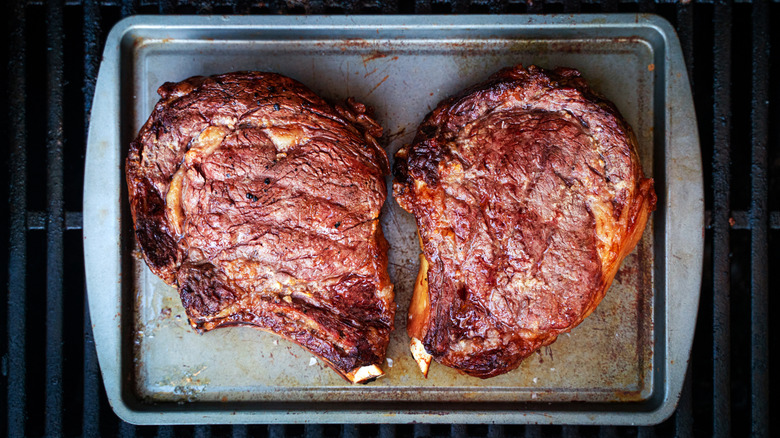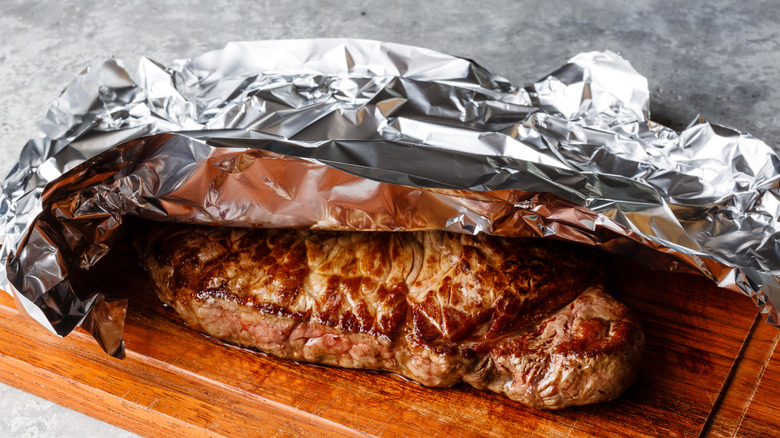The Formula That Ensures Perfectly-Rested Steaks Every Time
You think you know how to make the perfect steak. You've got the temperature down pat. You have a sixth sense when grilling steak. Your crusts are crisp and caramelized. You can tell when the steak is done with just a touch. But somehow, they fall short. What gives?
You could be forgetting one of the most important steps: sitting around and waiting. Even though that key step involves doing, well, nothing, it's easy to mess up. Recipes can be pretty vague about rest times, and nobody wants a cold steak. For advice, we turned to Cordon Bleu-trained chef Matthew Kreider, who currently works as Executive Chef at Miami's Steak 954.
"Steaks as a general rule need to rest for at least a third of their cook time," Kreider explains. "If it's a small steak like a filet I'll usually rest it for a minimum of five minutes." A mere five minutes is an easy wait for even the most impatient meat lovers — and the perfect amount of time to plate your sides and add a few finishing touches.
Sometimes, you'll have to plan ahead, though. "The larger the steak, and longer the cooking time the longer the steak needs to rest. If you are roasting a prime rib, a 30-45 minute rest is not out of the question," notes Kreider. Worried about the meat going cold? Cover it in foil. Just skip the foil for smaller cuts. If you trap too much heat, they'll overcook.
Why do steaks need to rest?
Okay, so now you know how you should rest a steak, but why should you rest a steak? Two reasons: Resting helps keep the meat juicy and lets the steak finish cooking.
When you heat a steak, the heat pulls the juices to the surface. That iconic sizzling as the steak hits the pan? That's the sound of evaporating water. Resting the steak gives the muscle fibers time to relax and re-absorb the liquids. If you cut the steak before the liquids are fully absorbed, they'll spill out — leaving the meat dry and unappetizing.
The meat also needs time to finish cooking. Whenever you remove food from heat, the residual heat keeps it cooking (unless you're using a method like blanching (which is the best way to remove tomato skins) where you cool the food off right away. Remove the meat from its heat source about 10 degrees Fahrenheit shy of the ideal temperature. The temperature will rise as it rests.
Remember: The resting rule applies to other meats, too. While there's no need to rest ground meat, like burgers, a Thanksgiving turkey needs to wait before being carved. Avoid resting meat for too long, though. According to the United States Department of Agriculture, leaving meat out for over two hours is risky.

